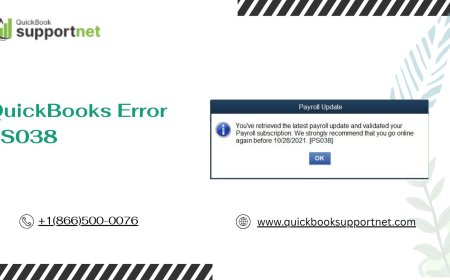How To Find Chile Relleno Stuffed Poblano
How to Find Chile Relleno Stuffed Poblano Chile relleno stuffed poblano is more than just a dish—it’s a culinary tradition rooted in Mexican heritage, celebrated for its rich flavors, vibrant colors, and satisfying texture. At its core, a chile relleno consists of a large, mild poblano pepper that has been roasted, peeled, stuffed with cheese (often queso fresco or Monterey Jack), battered, and fr
How to Find Chile Relleno Stuffed Poblano
Chile relleno stuffed poblano is more than just a dish—it’s a culinary tradition rooted in Mexican heritage, celebrated for its rich flavors, vibrant colors, and satisfying texture. At its core, a chile relleno consists of a large, mild poblano pepper that has been roasted, peeled, stuffed with cheese (often queso fresco or Monterey Jack), battered, and fried until golden. The result is a comforting, slightly spicy, and deeply savory experience that has earned a permanent place on menus across Mexico and the southwestern United States.
But for those unfamiliar with the dish—or even for seasoned food lovers—the challenge often lies not in preparing it, but in finding authentic, high-quality chile relleno stuffed poblano. Whether you’re searching for it in a local restaurant, a farmers’ market, or online, knowing where and how to look can make all the difference between a mediocre meal and an unforgettable one.
This guide will walk you through the entire process of locating authentic chile relleno stuffed poblano, from understanding its cultural significance to identifying the best vendors, recognizing quality indicators, and avoiding common pitfalls. By the end, you’ll have a comprehensive, actionable roadmap to find the perfect chile relleno wherever you are—whether you’re in Mexico City, Los Angeles, or a small town with a hidden gem of a taquería.
Step-by-Step Guide
Understand What Authentic Chile Relleno Looks and Tastes Like
Before you begin your search, you must know what you’re looking for. Authentic chile relleno stuffed poblano is not just any stuffed pepper. It’s a specific preparation with defined characteristics:
- Poblano pepper: Must be large, dark green, and heart-shaped. It should have a thick wall that holds up to roasting and stuffing.
- Roasted and peeled: The skin should be charred and removed, revealing a smooth, slightly smoky surface.
- Stuffed: Traditionally filled with melted cheese—queso fresco, Oaxaca, or Monterey Jack. Some variations include picadillo (a spiced meat mixture), but cheese remains the classic.
- Battered and fried: Dipped in a light egg batter (sometimes with a touch of flour), then fried in oil until golden brown and crispy on the outside, yet tender within.
- Served with sauce: Often accompanied by a red tomato-based sauce or a green tomatillo salsa, drizzled over the top or served on the side.
If you encounter a dish labeled “chile relleno” that’s baked instead of fried, stuffed with rice or vegetables, or uses a jalapeño instead of a poblano—it’s not traditional. Keep these markers in mind as you search.
Start with Local Mexican and Latin American Restaurants
The most reliable place to find authentic chile relleno stuffed poblano is at establishments that specialize in Mexican cuisine—particularly those run by families with roots in central or southern Mexico, such as Puebla, Oaxaca, or Guadalajara.
When evaluating a restaurant:
- Check the menu for “chile relleno” listed as a main course, not a side or appetizer.
- Look for descriptions that mention “fried in egg batter” or “traditional Puebla style.”
- Avoid places that list “chili relleno” with an “i”—this often indicates an Americanized version with less authenticity.
- Call ahead and ask: “Do you make chile relleno with roasted poblano peppers, stuffed with cheese, and fried in egg batter?”
Restaurants that take pride in their heritage will be happy to explain their preparation method. If they hesitate or give a vague answer, it’s a red flag.
Visit Mexican Markets and Grocery Stores
Many Mexican grocery stores, especially in areas with large Latinx populations, sell pre-made or frozen chile rellenos. These can be an excellent option if you plan to cook at home.
Look for:
- Refrigerated or frozen sections labeled “comida preparada” (prepared food).
- Brands that are locally owned or imported from Mexico.
- Ingredients lists that include only poblano peppers, cheese, egg, flour, and oil—no preservatives or artificial flavors.
Some stores even offer fresh, uncooked chile rellenos that you can fry at home. These are ideal for preserving the texture and flavor. Ask the staff: “¿Tienen chiles rellenos frescos hechos a mano?” (Do you have fresh, hand-made chile rellenos?)
Explore Farmers’ Markets and Food Trucks
Artisanal food vendors at farmers’ markets often prepare chile rellenos fresh daily using locally sourced ingredients. These are prime spots to find high-quality, small-batch versions.
Look for vendors who:
- Roast peppers on-site using open flames or comals.
- Use cheese from local dairies.
- Offer samples before purchase.
Many food trucks specializing in regional Mexican cuisine also feature chile relleno as a signature item. Search online for “Mexican food trucks near me” and filter for reviews mentioning “chile relleno.” Pay attention to photos—authentic versions are golden-brown and plump, not pale or soggy.
Use Online Directories and Review Platforms
Digital tools can dramatically streamline your search. Use platforms like Google Maps, Yelp, and TripAdvisor with targeted keywords:
- Search: “authentic chile relleno near me”
- Filter by “Mexican” cuisine and sort by highest ratings.
- Read reviews that mention specific details: “crispy batter,” “melty cheese,” “smoky poblano.”
- Avoid places with generic reviews like “good tacos” without mentioning chile relleno specifically.
On Google Maps, look for photos uploaded by users. Authentic chile rellenos appear as whole, intact peppers with a glossy, golden crust. Avoid images showing chopped or broken pieces—this may indicate a reconstituted or low-quality product.
Check Social Media and Food Blogs
Instagram, TikTok, and YouTube are goldmines for discovering hidden culinary treasures. Search hashtags like:
ChileRelleno
PoblanoPepper
MexicanFood
AuthenticChileRelleno
Follow local food influencers in regions known for chile relleno, such as Puebla, Mexico City, or San Antonio. Many post videos of the cooking process, which can help you recognize authentic preparation.
Food blogs written by Mexican chefs or culinary historians often include detailed guides to restaurants and markets. Search: “best chile relleno in [city name]” and look for posts with personal anecdotes, ingredient lists, and chef interviews.
Ask for Recommendations from the Mexican Community
No resource is more valuable than word-of-mouth from those who grew up eating chile relleno. Ask neighbors, coworkers, or friends of Mexican descent:
- “Where do you go for the best chile relleno?”
- “Do you know a family recipe I should look for?”
- “Is there a market or bakery that makes them fresh every day?”
Many families prepare chile rellenos for holidays like Día de los Muertos or Christmas. Local community centers, churches, or cultural associations often host food fairs where homemade versions are sold. Attend these events—they’re often the most authentic sources you’ll find.
Order Online from Specialty Food Retailers
If you live in an area with limited access to Mexican cuisine, consider ordering chile relleno stuffed poblano online. Several specialty retailers ship frozen or ready-to-heat versions nationwide:
- MexGrocer.com – Offers frozen chile rellenos made in Puebla.
- La Michoacana Meat & Produce – Ships fresh, pre-battered versions.
- Amazon Fresh – Carries regional brands like El Monterey or El Paso.
When ordering online:
- Check shipping times and storage instructions—fresh chile rellenos should be kept frozen until ready to fry.
- Read customer reviews for texture and flavor notes.
- Ensure the product lists “100% poblano pepper” and “no artificial fillers.”
Some artisanal producers even offer DIY kits with roasted poblanos, cheese, batter mix, and sauce—perfect for recreating the experience at home.
Learn to Identify Quality Indicators
Even in the best restaurants, not all chile rellenos are created equal. Here’s how to judge quality:
- Texture: The batter should be light and crisp—not greasy or soggy. A heavy, oily crust indicates poor frying technique.
- Color: The pepper should be deep green with a slight char. Pale or brown peppers are under-roasted or overcooked.
- Cheese: When cut open, the cheese should be molten and creamy, not rubbery or dry.
- Flavor: You should taste the smokiness of the roasted pepper, the richness of the cheese, and the subtle heat of the poblano—not overpowering spices or artificial seasoning.
- Sauce: The sauce should complement, not drown. Tomato sauce should be bright and slightly acidic; tomatillo sauce should be tangy and herbal.
Trust your senses. If it tastes bland, overly salty, or artificial, it’s not authentic.
Prepare to Order or Cook at Home
If you find a place that serves excellent chile relleno, consider asking if they sell the ingredients or offer cooking classes. Many restaurants provide take-home kits or host weekend workshops.
If you’d rather make it yourself, use your findings as a guide. Note the type of cheese used, the batter consistency, and the frying temperature. Then replicate it at home using the same principles.
Remember: The goal isn’t just to find chile relleno—it’s to understand what makes it great, so you can find it again, anywhere.
Best Practices
Be Specific in Your Search Queries
Generic searches like “chile relleno” yield broad results. To get accurate, high-quality results, use precise phrases:
- “Authentic chile relleno stuffed poblano near me”
- “Traditional Puebla-style chile relleno”
- “Fresh fried chile relleno with cheese”
Adding modifiers like “handmade,” “family recipe,” or “locally sourced” helps filter out mass-produced or commercial versions.
Verify the Origin of Ingredients
Authentic chile relleno relies on specific ingredients:
- Poblano peppers: Grown in Mexico’s central valleys. Peppers labeled “ancho” are dried poblanos—avoid these for fresh rellenos.
- Cheese: Queso fresco, Oaxaca, or Monterey Jack are traditional. Avoid processed cheese slices.
- Batter: Should be made with eggs, water, and a touch of flour—no baking powder or additives.
Ask restaurants or vendors: “Where do your poblanos come from?” and “What kind of cheese do you use?” Reputable sources will know and proudly share the details.
Seasonality Matters
Poblano peppers are at their peak from late summer through early fall. During this time, they’re larger, sweeter, and more flavorful. If you’re seeking the best chile relleno, time your search for September or October.
Outside of peak season, many vendors use imported or greenhouse-grown poblanos, which may lack depth of flavor. If you must eat chile relleno in winter, look for vendors who freeze fresh peppers during harvest season—this preserves quality better than using out-of-season alternatives.
Support Family-Owned Businesses
Chile relleno is a labor-intensive dish. It requires hours of roasting, peeling, stuffing, and frying. Large chains rarely make it from scratch—they often use pre-made frozen versions.
Family-run restaurants and small markets are far more likely to prepare chile relleno daily using traditional methods. Supporting them ensures the preservation of culinary heritage.
Look for signs like handwritten menus, Spanish-language signage, or photos of the owner’s family in Mexico. These are subtle indicators of authenticity.
Don’t Confuse Chile Relleno with Other Dishes
Many restaurants offer similar dishes that are not chile relleno:
- Chiles en nogada: Stuffed poblanos with walnut sauce and pomegranate seeds—served in August for Mexican Independence Day.
- Chile con queso: A dip made with melted cheese and chiles—no pepper involved.
- Stuffed bell peppers: Often baked with rice and meat—common in Americanized “Mexican” restaurants.
Always confirm the preparation method. If it’s baked, not fried, and uses a bell pepper—it’s not a true chile relleno.
Learn the Cultural Context
Understanding the history of chile relleno enhances your ability to recognize authenticity. The dish is believed to have originated in Puebla in the 19th century, possibly created by a nun at the Santa Monica convent. It became a centerpiece for celebrations and religious holidays.
Restaurants that honor this history often mention it on their menu or website. They may even serve it with traditional sides like refried beans, Mexican rice, and a slice of orange to balance the richness.
Knowing this context helps you distinguish between a tourist trap and a true cultural experience.
Document Your Findings
Keep a personal log of where you’ve found great chile relleno:
- Name of restaurant or vendor
- Location and address
- Date visited
- Price and portion size
- Notes on flavor, texture, sauce
- Photo (if allowed)
Over time, this log becomes a curated guide to the best chile rellenos in your region—or even across the country. Share it with friends or publish it online to help others discover authentic versions too.
Tools and Resources
Online Directories and Search Engines
Google Maps and Yelp remain the most powerful tools for discovering local chile relleno. Use advanced search filters:
- Filter by “Mexican” cuisine
- Sort by “Top Rated” or “Most Reviewed”
- Use the “Photo” tab to verify appearance
- Search for keywords like “handmade,” “fresh,” or “traditional” in reviews
On Google, use the “People also ask” section to uncover related queries such as “Where can I buy frozen chile relleno?” or “Is chile relleno healthy?” These can lead you to deeper insights.
Mobile Apps for Food Discovery
Several apps specialize in ethnic cuisine and can help you locate authentic dishes:
- Yelp – User reviews often include detailed descriptions of chile relleno quality.
- Google Reviews – Filter by photos and recent posts for up-to-date information.
- Zomato – Popular in urban areas; includes menus and pricing.
- Foodspotting – Community-driven app where users tag dishes by photo.
- Instacart or Amazon Fresh – For ordering frozen or pre-made chile relleno delivered to your door.
Specialty Food Websites
These websites offer authentic, high-quality chile relleno products for purchase:
- MexGrocer.com – Imports directly from Puebla; offers frozen and fresh options.
- La Tienda – Sells gourmet Mexican ingredients, including pre-stuffed poblanos.
- Amazon – Search for “authentic chile relleno frozen” to find trusted brands.
- Mayan Foods – Offers regional specialties, including handmade chile relleno kits.
Always check shipping policies and storage instructions. Fresh chile rellenos require refrigeration or freezing upon arrival.
YouTube Channels for Authentic Recipes
Watching how chile relleno is made helps you recognize quality. Recommended channels:
- Chef Raúl – Features traditional Puebla recipes.
- Adriana’s Kitchen – Step-by-step tutorials with cultural context.
- Mexican Food by Maru – Focuses on home-style preparation.
- Food Network: Mexico – Professional chefs demonstrate restaurant techniques.
Look for videos that show the entire process: roasting over flame, peeling by hand, stuffing with cheese, dipping in egg batter, and frying in hot oil. These are indicators of authenticity.
Books on Mexican Cuisine
Deepen your knowledge with authoritative texts:
- “Mexico: The Cookbook” by Margarita Carrillo Arronte – Comprehensive guide with regional recipes.
- “The Art of Mexican Cooking” by Diana Kennedy – Considered the bible of authentic Mexican cuisine.
- “Tacos: Recipes and Provocations” by Alex Stupak – Includes a detailed section on chile relleno.
These books explain the cultural significance, ingredient sourcing, and historical evolution of chile relleno—essential knowledge for any serious seeker.
Local Cultural Organizations
Many cities have Mexican cultural centers, heritage associations, or culinary societies that host food tours, tastings, and workshops:
- Check community calendars for “Mexican Food Festivals.”
- Contact local universities with Latin American studies programs—they often host public food events.
- Join Facebook groups like “Authentic Mexican Food Lovers” or “Chile Relleno Enthusiasts.”
These communities are often the first to know about pop-up vendors, secret recipes, or seasonal specials.
Real Examples
Example 1: La Casa de los Chiles – Puebla, Mexico
Located in the historic center of Puebla, La Casa de los Chiles has been serving chile relleno since 1947. Their recipe is unchanged: poblanos roasted over mesquite wood, stuffed with Oaxaca cheese, dipped in a light egg batter, and fried in lard. They serve it with a hand-made tomato sauce and a side of refried beans.
Visitors report the batter is “paper-thin and shatters like glass,” and the cheese “melts like warm butter.” The restaurant has no website but is listed on Google Maps with over 1,200 reviews—most include photos of the whole, golden pepper.
Example 2: El Charro Café – Tucson, Arizona
Established in 1922, El Charro Café is one of the oldest continuously operating Mexican restaurants in the U.S. Their chile relleno is made with locally grown poblanos and Monterey Jack cheese. The batter is made daily with fresh eggs and no flour—resulting in a lighter, airier crust.
They offer a “chile relleno platter” with salsa verde and Mexican rice. Online reviews consistently praise the “smoky depth” and “perfect balance of heat and creaminess.” The restaurant also sells frozen chile rellenos for home cooking.
Example 3: El Mercado de la Raza – San Diego, California
This bustling Mexican market features multiple food stalls. One vendor, “Abuela Rosa’s Kitchen,” prepares chile relleno fresh every morning. She uses poblanos from her cousin’s farm in Michoacán and cheese made by a local dairy.
Her version is served with a side of pickled red onions and a drizzle of crema. Customers line up before opening. She doesn’t advertise online—but locals know her by name. Her stall is marked by a hand-painted sign: “Chiles Rellenos Hechos a Mano.”
Example 4: Frozen Brand – El Monterey Chile Relleno
Available nationwide in grocery freezers, El Monterey’s frozen chile relleno is one of the most widely distributed. While not handmade, it’s made with real poblanos, real cheese, and a traditional egg batter. It’s fried in vegetable oil and contains no artificial preservatives.
Consumer reviews on Amazon average 4.5 stars. Many customers say it’s “the closest thing to restaurant quality you can get at home.” It’s a reliable option for those without access to authentic vendors.
Example 5: Pop-Up at the Santa Monica Farmers Market
Every Saturday, a vendor named “Cocina de la Abuela” sells fresh chile relleno at the Santa Monica Farmers Market. She roasts the poblanos on a portable comal, stuffs them with queso fresco from a local goat dairy, and fries them in avocado oil.
She serves them with a salsa made from roasted tomatillos and epazote. Each one costs $8.50 and sells out by noon. She accepts cash only and doesn’t have a website—but her Instagram account (@abuelaschilerelleno) has over 8,000 followers.
FAQs
What is the difference between chile relleno and chile en nogada?
Chile relleno is a fried, cheese-stuffed poblano pepper with a tomato or tomatillo sauce. Chile en nogada is a seasonal dish served in August, featuring a stuffed poblano topped with a creamy walnut sauce (nogada), pomegranate seeds, and parsley—representing the colors of the Mexican flag. They are both traditional but distinct in preparation, ingredients, and cultural timing.
Can I find vegan chile relleno?
Traditional chile relleno uses cheese and egg batter, making it non-vegan. However, some modern restaurants offer vegan versions using plant-based cheese and aquafaba (chickpea water) as an egg substitute. These are less common but increasingly available in urban areas with strong plant-based communities.
Is chile relleno healthy?
Chile relleno is high in fat due to frying and cheese, but it’s also rich in protein, fiber, and vitamins from the poblano pepper. Moderation is key. Baking instead of frying or using low-fat cheese can make it healthier. The roasted pepper itself is packed with antioxidants and vitamin C.
Why is my chile relleno soggy?
Sogginess usually results from undercooked batter, low frying temperature, or letting the dish sit too long before serving. Authentic chile relleno should be served immediately after frying, with a crisp crust. If the batter absorbs oil, the oil was too cool or the batter too thick.
Can I freeze homemade chile relleno?
Yes. After frying and cooling, wrap each chile relleno individually in plastic wrap and store in an airtight container in the freezer for up to 3 months. Reheat in a 350°F oven until crispy. Do not microwave—it will make the batter soggy.
What’s the best cheese for chile relleno?
Queso fresco is traditional for its mild, crumbly texture. Monterey Jack melts well and is widely available in the U.S. Oaxaca cheese offers a stringy, gooey center. Avoid processed cheeses—they lack flavor and don’t melt properly.
Are all poblanos the same?
No. Poblanos vary in size, heat level, and thickness. For chile relleno, choose large, thick-walled, dark green poblanos—avoid thin-skinned or red ones (which are dried and called ancho). The pepper should be firm and slightly glossy.
How do I know if a restaurant is authentic?
Authentic restaurants use traditional methods: roasting peppers over flame, making batter from scratch, and using real cheese. They often serve it with sides like refried beans and Mexican rice. Look for Spanish-language menus, Mexican flags, and staff who speak Spanish. Ask about the origin of ingredients—authentic places will know.
Conclusion
Finding authentic chile relleno stuffed poblano is more than a culinary quest—it’s a journey into Mexican culture, history, and craftsmanship. Each step, from understanding the dish’s origins to identifying quality indicators, deepens your appreciation for the artistry behind it.
Whether you’re searching in a bustling market in Puebla, a family-run taquería in Texas, or ordering online from a specialty producer, the key is intentionality. Don’t settle for the first “chile relleno” you see. Ask questions. Observe ingredients. Taste with care. Trust your senses.
By following the steps outlined in this guide—using digital tools, connecting with communities, learning from experts, and supporting authentic vendors—you’ll not only find the perfect chile relleno but also contribute to the preservation of a cherished tradition.
Remember: the best chile relleno isn’t just eaten—it’s experienced. It carries the smoky aroma of roasted peppers, the warmth of handmade batter, and the quiet pride of generations who have perfected this dish. Your search isn’t just about food—it’s about connection.
Now go forth, armed with knowledge and curiosity. Find your chile relleno. Savor it. Share it. And keep the tradition alive.

























